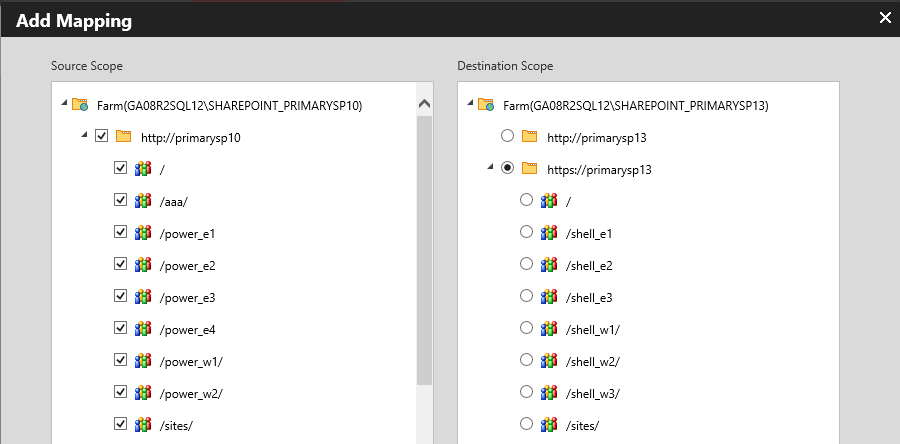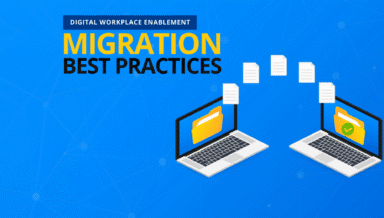How to Reduce the Burden on IT and Involve Content Owners in Your Next SharePoint Migration


With the release of SharePoint 2016 on the horizon and the continued maturation of Office 365, the topic of upgrading your SharePoint deployment is likely floating around your organization. At first this can seem like a daunting prospect, and yet another project to manage. However, with the right approach, a migration can be an opportunity to implement best practices and finally take control of some of the content sprawl that has likely overtaken your environment.
Often, the responsibility of a SharePoint migration rests fully on the shoulders of IT departments and SharePoint administrators. This is not always ideal, because administrators are generally disconnected from the business and do not necessarily know the value of specific content housed in SharePoint. To help organizations facilitate migration projects according to their specific needs and reduce the burden on IT, we are excited to announce DocAve Governance Automation Service Pack (SP) 6, which includes the new User Driven Migration feature. This new service empowers empower content owners to migrate all business-critical content to the latest version of SharePoint through automated tasks.

Pre-Migration
Before you start moving data to a new SharePoint environment, an important first step is getting a handle on your current environment and understanding the content that lives within it. That way you can determine what needs to go to the new environment, what can be pruned out of the system, and what should be reorganized upon migration to improve user experience as well as meet organizational policies. To make tight deadlines, however, many companies skip this step entirely before migrating. Instead of taking advantage of the fresh start a migration provides, this “ship it now and sort it later” mentality will cause the new environment to be plagued with many of the same issues as the old one.
DocAve Governance Automation enables you to begin the migration project by initiating an election process to match the right stakeholders to the right content. An ownership certification task is then automatically sent to the current content owner if one exists. If a content owner is not immediately identifiable, the request will initiate a workflow that contacts the most likely stakeholders predefined in the approval process until the right one is found. Meanwhile, administrators can view a report on the level of completion for each automated task without having to be directly involved in the notification and escalation process.

The new User Driven Migration feature is built using the same service catalog model as other service offerings in DocAve Governance Automation. Once a service has been configured, you have a flexible and reusable request option that can take advantage of all of the options DocAve Governance Automation offers today.
User Driven Migration
After the appropriate content owners are identified, the administrator can begin the migration process. Since all content may not need to go to the new environment, DocAve Governance Automation helps you to route it according to specific needs. When migrating to Office 365, for example, some content may need to remain on premises for compliance reasons. Inactive content may also be eligible for archiving or deletion. DocAve Governance Automation’s questionnaire feature – which can be used to solicit information from the requester and determine a service endpoint based on their responses – is a powerful tool to guide users to the right service request, and may provide alternatives to migrating such as restructuring data within the legacy farm.

Once the requester is routed to the correct service from the questionnaire, the content owners can select the content to be migrated or left behind. Their requests then move through a pre-configured approval process. After the request has been approved by the relevant departments such as compliance or a migration project manager, the migration job runs according a schedule defined by the SharePoint administrator. This helps avoid a potential resource drain during business hours or running too many concurrent jobs. After the migration is complete, a notification is sent to the content owner that directs them to the new location of their content.
By involving content owners in the migration process, organizations can ensure that the right data is migrated to the new system and avoid bringing over stale, unused files. Through automated tasks, service requests, and election processes, DocAve Governance Automation also relieves administrators of a significant workload. This ultimately helps IT better plan for and focus on the overall scope of the migration.
Try User Driven Migration Today
For more information on how you can utilize DocAve Governance Automation to simplify your next SharePoint migration and to download a free 30-day trial, please visit our product page.
Have a specific question about the new feature? Leave a comment on this blog post or join us in our product discussion forums.


